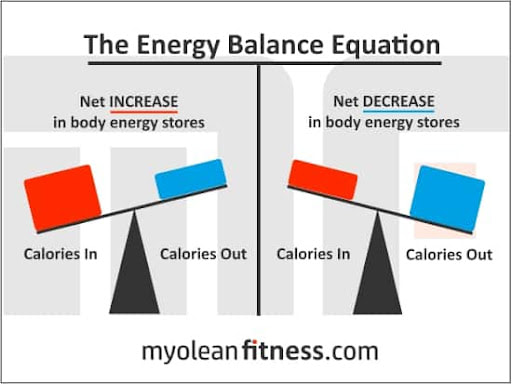|
EVERYBODY IS TALKING ABOUT IT. Unless you follow Dr. Oz, the #ketowarriors, or the descendants of Vegan Gains — you’ve heard that a “calorie deficit” is the key to losing fat. We’ll get into details later, but to refresh: a “calorie deficit” simply means your body is burning more calories than you’re consuming (i.e., calories out > calories in = weight loss (few exceptions)). A “calorie surplus” means you’re burning fewer calories than you’re consuming (i.e., calories out < calories in = weight gain). And if you’re eating at your “maintenance calories,” you’re burning around the same number of calories as you’re consuming (i.e., calories out = calories in = maintain stable weight). Now, I could get deep into the minutia of calories in calories out and how your body “burns” calories, but you probably don’t care about the science. What you do care about: me knowing the science and giving you the actionable steps to put into practice. And that’s exactly what I’m gonna do, so take a quick glance at this pretty picture and let’s keep it movin’. That’s the why. Now, I’ll share the how.
For the record, I’ve never seen another fitness coach put this information out for free. This is exactly how I set up a calorie deficit for my online coaching clients, so listen up. STEP 1: BUY SCALES. Buy a bodyweight scale and a food scale. These are reasonably cheap and some of the best investments you can make for managing your body. Plus, there are two things humans suck at: estimating and remembering data. In fact, one study on daily food reporting showed even dietitians to be off by up to 800 calories. Some non-dietitians were off by over 1,000 calories! So, yeah. Buy the scales so you don’t do this. STEP 2: DOWNLOAD A FOOD TRACKING APP. I recommend FatSecret or My Fittness Pal to my clients. Don’t use the macro calculator for any of them as that’s the point of this post ⏤ this way is more accurate. MFP might just be more accessible in terms of how to use the app for some people. However, another downside of MFP is their calories can be off with some of their foods due to user inputted data. Just make sure your total daily macros match up to your total daily calories and you’ll be good to go. Any tracking app or using a pad and pen (if you’re a neanderthal) will work just fine. We’ll cover your macros (proteins, carbs, and fats in a bit). STEP 3: EAT NORMALLY AND TRACK EVERYTHING. Without drastically changing how you currently eat, track every single thing (very important this is accurate!) you put in your mouth for at least four days (preferably three weekdays and one weekend day). I say to eat normal because you want to find your current baseline. If you go changing everything you eat, you’ll skew your results. And when I say track everything, I mean EVERYTHING — alcohol, condiments, oils, drinks, supplements, butter, sauces, dessert, etc. STEP 4: AVERAGE OUT YOUR BASELINE. After tracking at least four days, find the average number of calories you ate during that time period. For example:
STEP 5: REMAIN CONSISTENT WITH TRACKING WEIGHT AND FOOD FOR 14 DAYS.Try to hit within +/- 50 of that average calorie amount (2,150 – 2,250) every single day for the next 2 weeks (including weekends!) AND weigh yourself every day in the morning – before you eat and after you take your morning dump. It’s important you try to mimic each day so you can get a realistic idea of what your “typical” intake and weight would look like, i.e., don’t do this during vacation. STEP 6: ANALYZE WEIGHT TRENDS. Given that you followed step 5 correctly, we should now see a trend in what your weight does based off how much food you’re eating. If you’re eating ~2,200 calories per day and your weight is trending downward (not down every single day because weight fluctuates) over the course of two weeks — you’re likely in a calorie deficit. If your weight is staying about the same (within a pound or so), subtract 250 calories from your daily calorie goal and keep consistent. This means you are eating around your maintenance calories. If your weight is trending upward, take away 350-500 calories per day (you’re in a calorie surplus). -Coach Kayli
0 Comments
Your comment will be posted after it is approved.
Leave a Reply. |
AuthorKayli is a certified personal trainer and online coach that specializes in fitness, wellness, nutrition, mindset, mobility and everything in between. Categories
All
Archives
April 2024
|
Call Us 620-757-9146
Home | About Us | Personal Training | Online Nutrition and Fitness Coaching | Custom Training Plans | Breakfast | Entrees | Dressings | Snacks | Blog
Phoenix Rising Podcast | Product Recommendations | Contact Me
Phoenix Rising Podcast | Product Recommendations | Contact Me
Copyright 2024 Kayli Montoya Fitness


